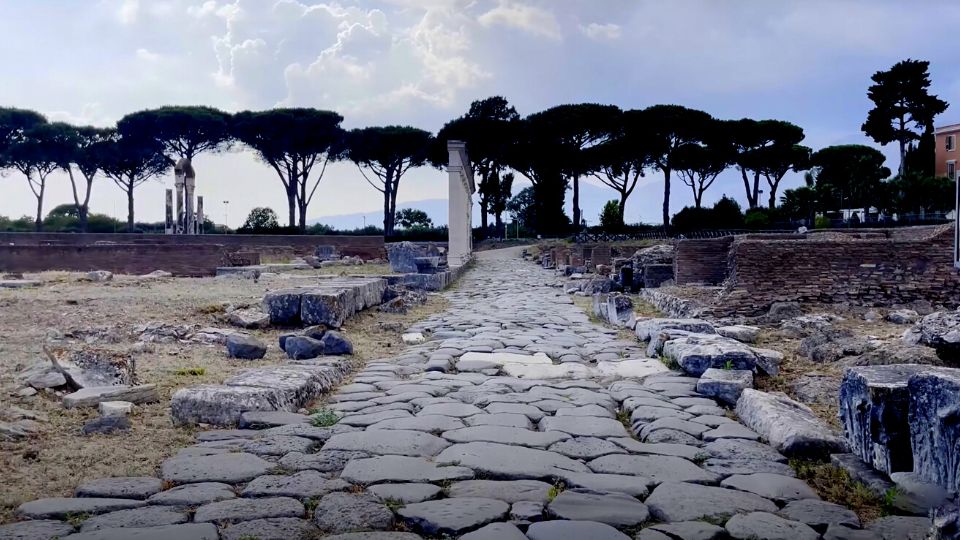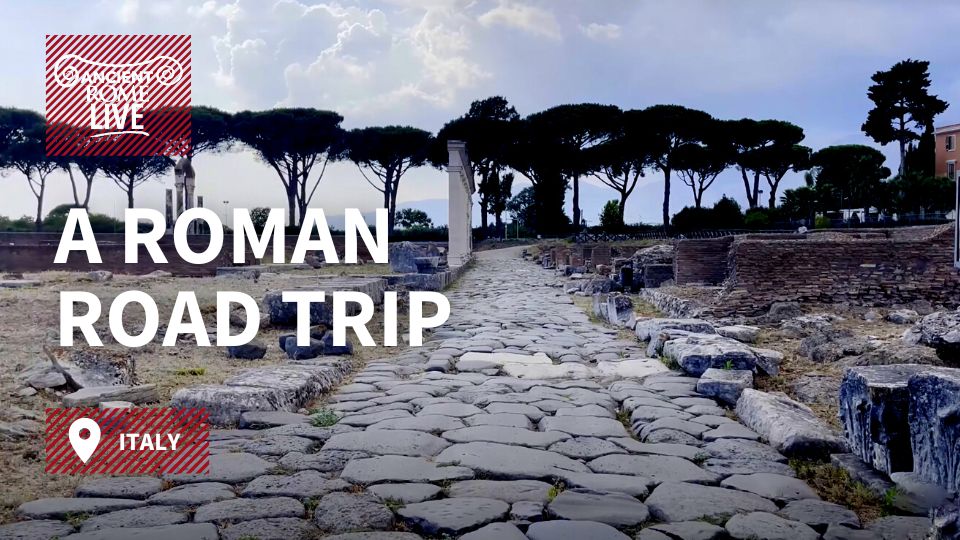Start with our video overview:
The next section of Via Appia led to Fondi and then on to Minturnae, along which several significant monuments and settlements are found. The starting point of this section, Fondi, was an ancient Auruncian and later Volscian settlement, until it fell under Roman rule in 338 BCE. By the time Via Appia was constructed through this area, its inhabitants were Roman citizens (without suffrage), and the increased traffic promoted greater activity and wealth. Consequently, there are tombs lining the road to Fondi, as was typical at the time. One surviving example being the early imperial Mausoleum of Galba, one of the four short-lived emperors between the reigns of Nero and Vespasian who originally hailed from nearby Terracina. In Fondi, there are remains of imperial baths that were uncovered in a WWII air raid, and a papal castle, demonstrating the long and layered history of this key site along Via Appia.
Via Appia then continues southeast through the Monti Aurunci Park, named after the Italic group of people who used to populate the area. The ascent of Via Appia from Fondi passes a Republican era temple of Apollo, whereas the major sight on the descent to Formiae is the medieval Itri Castle, first constructed in the ninth century to defend the coast. Ancient traces of Via Appia traffic remain in a mansion with opus reticulatum cut directly into the living bedrock along the roadside and Cisternone, one of the largest known Roman cisterns which would have provided water at this rest stop. The route maintains modern functions as both a road and an archaeological site.
Between Fondi and Minturnae lies Formiae, 81 miles from Rome: this too was originally an Aruncian settlement, before being taken by the Volsci and ultimately Rome. This ancient seaside resort preserves Republican villas which were once owned by the likes of Pompey and Cicero, the latter of whom was assassinated on Via Appia close to his villa in 43 BCE and is thought to be buried in a nearby 24 meter tomb along the way. The villa of Mamura is also thought to be in this area, and evidence of occupation by wealthy Romans continues until the third century CE in the archaeological record.
Via Appia stretches onto Minturnae, one of the towns against which Rome fought during the Second Samnite War when Via Appia was constructed. Ultimately defeated, it was overtaken by Rome as a fort in 296 BCE and made a colony by Augustus when it gained its monumental structures. Some were new constructions and others improvements of older buildings, including temples to Augustus and Julius Caesar, a theater, basilica, and a macellum (indoor food market). These archaeological remains indicate the prominence of Minturnae throughout the later Republican and early imperial periods, both as a settlement supported by significant traffic and as a stop-over point for travelers headed further south or to Rome.
References
- H. Davis, “Cicero’s Burial”, Classical Association of Canada 12.4, (1958).
- Johnson, I. Ben-Dor, “Excavations at Minturnae: Monuments of the Republican Forum”, (Princeton 1935).
- Princeton Encyclopedia of Classical Sites, “Fundi” and “Minturnae”, (Princeton 1976).
- Altmann, “Fondi: Biography of a Forgotten Town”, (2019).
This content is brought to you by The American Institute for Roman Culture, a 501(C)3 US Non-Profit Organization.
Please support our mission to aid learning and understanding of ancient Rome through free-to-access content by donating today.
Cite This Page
Cite this page as: Darius Arya, The American Institute for Roman Culture, “Via Appia: Episode IV, Walking Rome’s Oldest Road” Ancient Rome Live. Last modified 01/19/2023. https://ancientromelive.org/via-appia-episode-iv-walking-romes-oldest-road/
License
Created by The American Institute of Roman Culture, published on 01/19/2023 under the following license: Creative Commons: Attribution-NonCommercial-ShareAlike. This license lets others remix, tweak, and build upon this content non-commercially, as long as they credit the author and license their new creations under the identical terms. Please note that content linked from this page may have different licensing terms.



